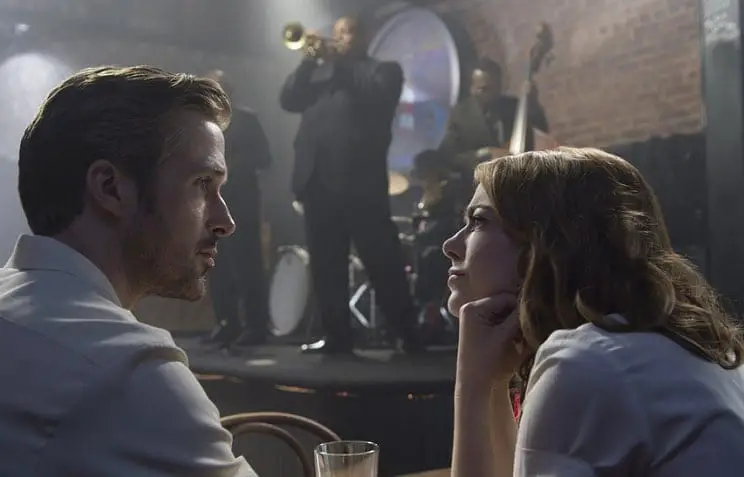La La Land (2016): Musical About Dreamers Who Turn Out To Be Realists. Full Analysis, Explanation Of The Philosophical Meaning Of Plot & Ending.
The success of La La Landa can be safely called overwhelming. Turning to the genre covered with the dust of oblivion, the film’s director D. Shazell not only overcame the resistance of the producers, who were confident that no one needed a jazz musical, but also made a film that grossed $446 million with a budget of 30 million, and won six Oscars.
As it turned out, the audience yearned for films in which there are no drug addicts, no maniacs-sociopaths, no struggle for the rights of oppressed social groups, but there are many songs, dances and romance. La La Land is the perfect film for those looking for an opportunity to relax and unwind from cinema, but at the same time, Chazelle’s musical is not without a certain depth.
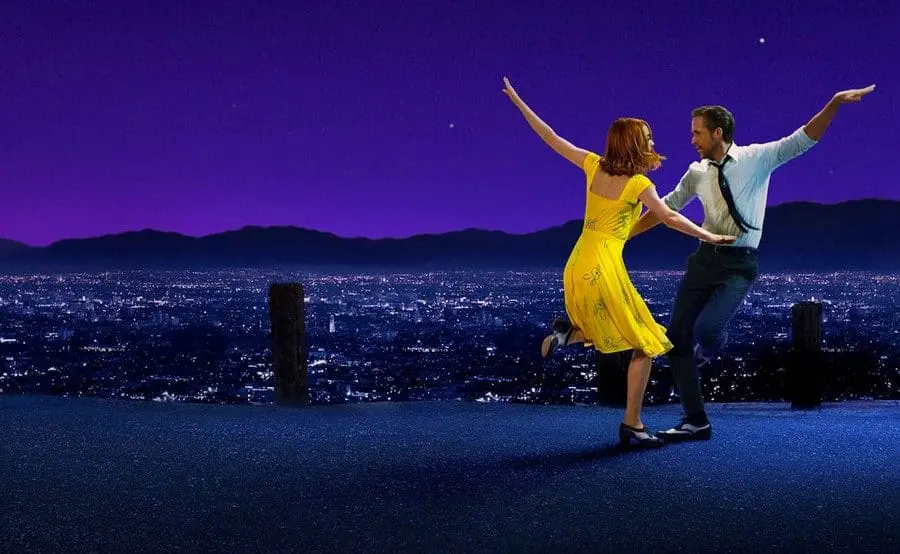
What is La La Land?
The title of the film in English is interpreted in two ways: it is both an informal name for Los Angeles, and an expression that means the loss of connection with reality. The director himself considers the film a tribute of gratitude to everyone who once decided to follow their dream, to come to Los Angeles and conquer it.
What is the meaning of the first frames?
At the beginning of the film, the main characters – Mia and Sebastian – find themselves in a huge traffic jam that turns into a large-scale vocal and choreographic scene (100 dancers took part in it). Thus, the viewer is hinted at the main driving force of the plot – the desire to achieve success in Los Angeles, and at the same time demonstrate the scale of the city.
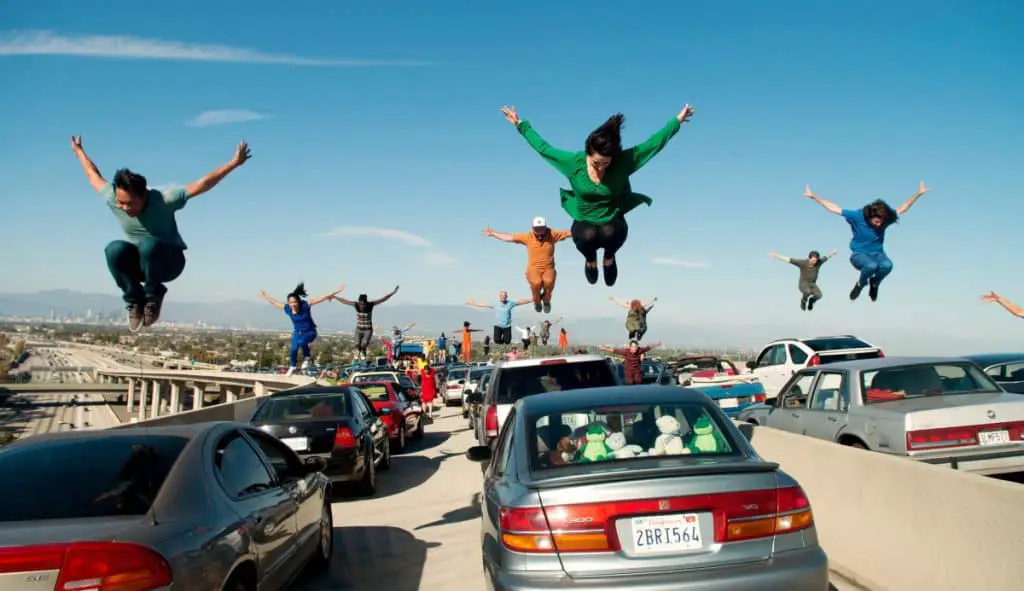
What is the meaning of the jazz theme in the film?
At first glance, everything is simple: Sebastian is a jazz pianist, and it is natural that this particular musical direction is given so much space in the film. However, why jazz and not rock, pop or classical? Because the director of the film loves him so much? And why at the beginning of their acquaintance Mia declares that she is indifferent to jazz, and after a successful casting admits that she fell in love with it?
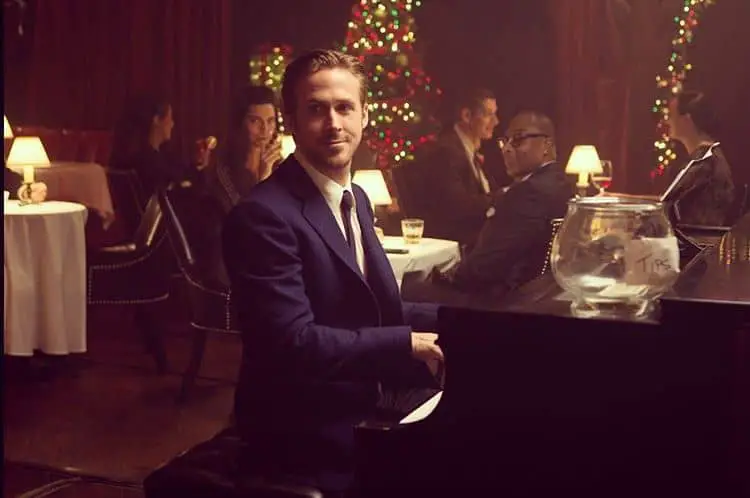
The theme of jazz can be viewed in two aspects: nostalgic-musical and philosophical. Musically, “La La Land” is a continuation of the traditions of the great jazz musicals of the past, both Hollywood and European, and the full list of musical film masterpieces of the past, which the filmmakers were guided by, would take more than one page.
In philosophical terms, jazz music is the embodiment of the joy of life, its positive beginning. Moreover, jazz with its improvisations is as spontaneous and full of unexpected turns as life itself. To love jazz means to love and accept life, and in this sense, Mia’s recognition means much more than a change in musical tastes.
What’s the point of the scene at Griffith Observatory?
On the first “real” date, Sebastian and Mia go to the cinema, and they watch not a novelty, but the old movie hit “Rebel Without a Cause” (1955). When the film is interrupted, the heroes go to the Griffith Observatory – a real-life institution that unites under one roof a planetarium, a museum, various exhibitions, etc. Thus, they seem to continue the film, cut short by the footage of the observatory: their reality becomes as exciting as the movie (and even better, since Rebel Without a Cause is a drama about juvenile delinquents). At the same time, the observatory appears in a kind of symbolic image, hinting, on the one hand, at the world of stars that heroes dream of becoming, and on the other, at the magical power of love that lifts above the earth: the souls of the heroes, so to speak, soared into heaven.
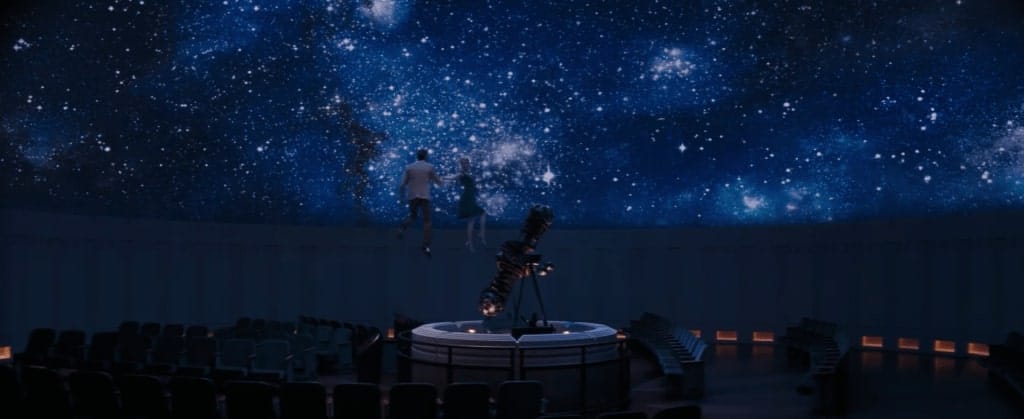
Why is there no classic happy ending in the film?
While the La La Landa finale cannot be said to make you cry, it nevertheless has a distinct taste of sadness. The heroes parted, and although the past is alive in their memory, they will no longer be together. Classical musicals ended much more optimistically, despite the fact that the obstacles between hearts in love were much more serious. Why did Chazelle deviate from tradition in this case?

Some viewers believe that the director simply wanted to add drama, but in fact, the reasons are somewhat more complicated. La La Land, like any work of art, cannot ignore the changed reality. The reality is that egocentrism has turned from vice into a variant of the norm, and love has ceased to be the meaning of life. The heroes of La La Landa are not just modern people, they are modern people who have achieved success, and therefore cannot be different. And here we smoothly move on to the main idea of the film.
What’s the point of the movie?
It was hardly worth the effort to say once again that music inspires and love inspires. The idea that you have to pay for success is also not fresh, and besides, it cannot be said that it was their career successes that played a fatal role in the fate of the heroes. After all, Hollywood is full of “star” couples. Mia and Sebastian were separated not by external circumstances, but by themselves: both were too used to pulling the blanket over themselves. If love has changed them, then not for long.

The true meaning of “La La Land” helps to understand its slogan: “Dedicated to fearless dreamers …”. A dream, like love, is beautiful, and in the life of every person there should be an amazing period when he (or his soul, it doesn’t matter!) Dances between the stars, rising up above the prose of life. But this is precisely the period: you cannot build castles in the air all your life. No matter how love and romance change a person, sooner or later he returns to his “I”, and dancing in the clouds is replaced by more earthly affairs. But this does not mean that you need to suffer from the fact that the amazing era of life is over: you need to be glad that it was. And it is no coincidence that in the final shots, Mia and Sebastian smile, thanks to each other for the past.
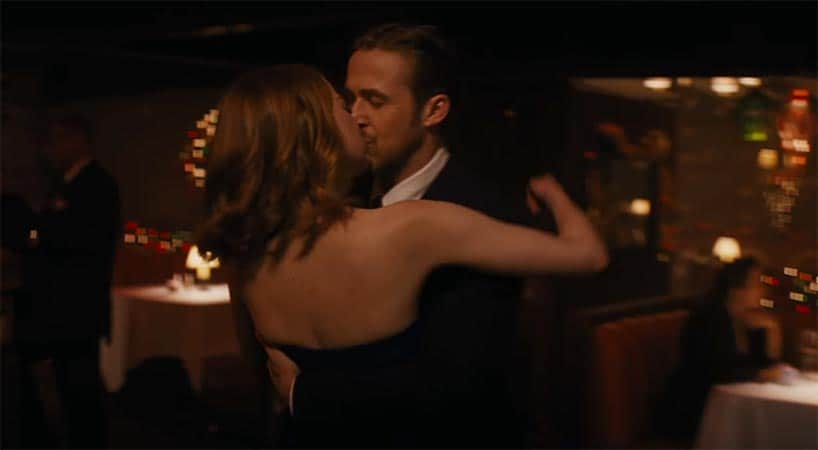
Interesting Facts
Although in the first draft of the script the events took place in Boston, Chazelle decided to move the action to Los Angeles, giving the image of the city a tangible flavor of nostalgia. To remind the audience of the golden era of jazz musicals, the director looked for places that preserved the atmosphere of that time. One of such places is the old funicular “Flight of the Angels”. Since 2013, it was considered defective and was closed. Chazelle managed to arrange for the funicular to be reopened for one day, and after the film’s phenomenal success, it was refurbished and re-launched on August 31, 2017.

In the role of Mia, viewers had a chance to see another Emma – not Stone, but Watson, best known for her role as Hermione Granger from “Potteriana”. But Watson decided that fairy tales were nevertheless closer to her than musicals, and preferred to star in the movie “Beauty and the Beast”.
But Ryan Gosling, who was offered to play the Beast, decided that the image of a jazzman was dearer and more understandable to him. In the end, everyone won: the director, the actors, and the audience.
